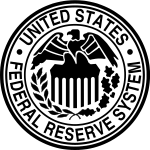Check 21 Act
| This article is part of a series on |
| Banking in the United States of America |
|---|
 |
|
Lending |
|
United States portal |
The Check Clearing for the 21st Century Act (or Check 21 Act) is a United States federal law, Pub.L. 108–100, that was enacted on October 28, 2003 by the 108th U.S. Congress. The Check 21 Act took effect one year later on October 28, 2004. The law allows the recipient of the original paper check to create a digital version of the original check, a process known as check truncation, into an electronic format called a "substitute check", thereby eliminating the need for further handling of the physical document. In essence, the recipient bank no longer returns the paper check, but effectively e-mails an image of both sides of the check to the bank it is drawn upon.
Consumers are most likely to see the effects of this act when they notice that certain checks (or image of) are no longer being returned to them with their monthly statement, even though other checks are still being returned. Another effect of the law is that it is now legal for anyone to use a computer scanner or mobile phone to capture images of checks and deposit them electronically, a process known as remote deposit.
Check 21 is not subject to ACH (Automated Clearing House) rules, therefore transactions are not subject to NACHA (The Electronic Payments Association) rules, regulations, fees and fines.
Truncation
The Act lets banks take advantage of image technologies and electronic transport while not being dependent on other banks being ready to settle transactions with images instead of paper.[1] The process of removing the paper check from its processing flow is called "check truncation". Paper checks continue to transition to electronic images, with almost 70% of all institutions receiving images as of January 2013.[2] In truncation, both sides of the paper check are scanned to produce a digital image. If a paper document is still needed, these images are inserted into specially formatted documents containing a photo-reduced copy of the original checks called a "substitute check".
Once a check is truncated, businesses and banks can work with either the digital image or a print reproduction of it. Images can be exchanged between member banks, savings and loans, credit unions, servicers, clearinghouses, and the Federal Reserve Bank.
Not all banks have the ability to receive image files, so there are companies who offer the service. At the item processing center, the checks are sorted by machine according to the routing/transit (RT) number as presented by the magnetic ink character recognition (MICR) line, and scanned to produce a digital image. A batch file is generated and sent to the Federal Reserve Bank or presentment point for settlement or image replacement. If a substitute check is needed, the transmitting bank is responsible for the cost of generating and transporting it from the presentment point to the Federal Reserve Bank or other corresponding bank.
Effects and developments
Remote deposit
Check 21 has also spawned a new bank treasury management product known as remote deposit. This process allows depositing customers the ability to capture front and rear images of checks along with their respective MICR data for those being deposited. This data is then uploaded to their depositing institution, and the customer's account is then credited. Remote deposit therefore precludes the need for merchants and other large depositors to travel to the bank (or branch) to physically make a deposit.
In addition to remote deposit, other such electronic depositing options are available to qualifying bank customers through NACHA. These options include "Point of Purchase Entry" (POP) and "Back Office Conversion Entry" (BOC) for retailers, and "Accounts Receivable Entry" (ARC) for high volume remittance receivers. These transactions are not covered under the Check 21 legislation, but rather are electronic conversions of the checks' MICR data into an ACH (Automated Clearing House) debit. This can help the depositor save on the costs of transporting checks and in bank fees. However, the liability changes from Regulation CC of the Federal Reserve to Regulation E, which provides much more protection for the account being debited and therefore more risk to the merchant and originating bank.
Patents
There are a number of patents relating to "check collection systems",[3] including some owned by DataTreasury.[4]
See also
References
- ↑ "Check 21 – US Check based payments in transition". Retrieved 2013-06-27.
- ↑ "CheckImage Central". Archived from the original on 2013-03-28. Retrieved 2013-03-27.
- ↑ Congressional Budget Office Cost Report, pages 2, 5 and 11
- ↑ Lisa Lerer, "Senate, old legal woes drawn into patent fight", politico.com, March 25, 2008
External links
- Full Text of the Check 21 Act
- Accredited Standards Committee (ASC) X9 Financial Industry Standards: Statement on Check 21 adoption (October 23, 2004)
- Check 21 Return Codes